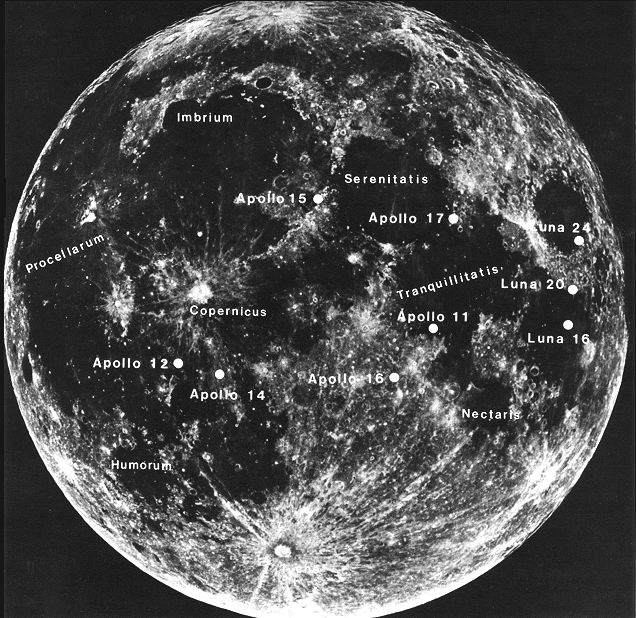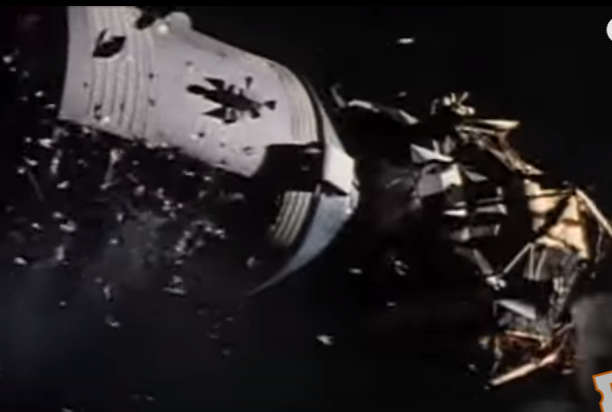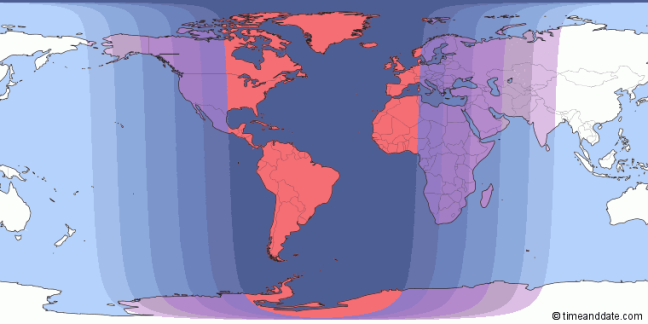Joseph ” Moonfox” Heitzenrater
11 Jul 2016
Moon 201: The Science
Apollo 13
1) Where on the moon was Apollo 13 supposed to land?
When I watched the film, I missed where they said they were supposed to land, so I looked it up. According to the wiki article about the mission, Apollo 13 was to land and explore the Fra Mauro formation that was created by the impact debris from the creation of the Mare Ibrium long ago (Apollo, 2016). Although they did not land here, Apollo 14 went back to study the area. On the image below, the area labeled with Apollo 14 (just south of the Copernicus Crater) is the location of the area where Apollo 13 was supposed to land (2016).
 (Schmitt, 2003)
(Schmitt, 2003)
2) What happened to Apollo 13 during its flight to the moon? (Tell what happened, in your own words, but be as accurate as possible.)
In the movie, Jack Swigert “stirred the tanks” which caused an oxygen tank to explode and damage to the craft (Apollo, 1995).
 (Cooper, 2016)
(Cooper, 2016)
From this point, it was a scramble by the crew and the ground control to shut down the oxygen that was venting into space, use the lunar module as a “life raft,” make the necessary course corrections to abort the moon landing and return home, fix a broken CO2 filter, and reenter the Earth’s atmosphere despite damage to the vehicle (1995). This is quite the task on their shoulders and provides much of the conflict in the movie. For the more technically minded, at about 56 hours into flight, damaged Teflon wiring linked to the tank stirring fans ignited tank 2 causing an explosion that damaged tanks 1 and 3 to the point of being nonoperational (Apollo, 2016).
3) What is something new that the film taught you about astronauts, space flight, or the moon?
I was really surprised about the long blackout periods experienced by the astronauts. The last 3 to 4 minutes in the movie seemed to take forever, as the tension mounted. But when they were doing their gravity swing around the moon I was surprised how long that took without them being able to communicate with Houston. Something else that I found fascinating is that everything they did involved relatively simple math (Trigonometry) and Newtonian Physics. The exactness of everything they did, both in rehearsal and in real life dealt with stuff that a high school student can understand. That is not to take away from what they did, (I’m only referring to the flight mechanics of their mission), because their engineering creativity was pretty amazing, which leads me into the last question.
4) What do think was the most interesting part of the film?
For me the most interesting part of the film was equally split between reentry, and them overcoming the CO2 problem (Apollo, 1995). So many things could have gone wrong at reentry…and it’s really remarkable that they didn’t. I was at the edge of my seat (even though I had seen the film before) at this moment in the movie. Also, when the mission control engineers came into the conference room and laid out all the different materials on the table, this was pretty awesome! They needed to put a square peg in a round hole…and that’s exactly what they did (1995)!
Works Cited
Apollo 13. Dir. Ron Howard. Perf. Tom Hanks, Kevin Bacon, Bill Paxton, and Ed Harris. Universal, 1995.
“Apollo 13.” <https://en.wikipedia.org/wiki/Apollo_13>. 17 May 2016. Web. 10 Jul. 2016.
Cooper, Steve. “Wyoming’s Contribution To Saving “Apollo 13″ 46 Years Ago Today.” < http://kingfm.com/wyomings-contribution-to-saving-apollo-13-video/>. 13 Apr. 2016. Web. 10 Jul. 2016.
Schmitt, Harrison. “Evolution of the Moon: Apollo model.” Fusion Technology Institute. < http://fti.neep.wisc.edu/neep602/LEC10/EVOL/evolution2.html>. 21 Aug. 2003. Web. 10 Jul. 2016.

 (Schmitt, 2003)
(Schmitt, 2003) (Cooper, 2016)
(Cooper, 2016)
